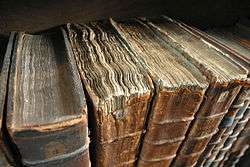Pekudei
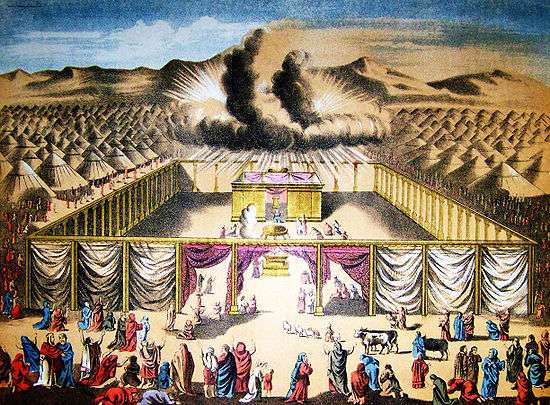
Pekudei, Pekude, Pekudey, P'kude, or P'qude (פְקוּדֵי — Hebrew for "amounts of," the second word, and the first distinctive word, in the parashah) is the 23rd weekly Torah portion (פָּרָשָׁה, parashah) in the annual Jewish cycle of Torah reading and the 11th and last in the Book of Exodus. It constitutes Exodus 38:21–40:38. The parashah is made up of 4,432 Hebrew letters, 1,182 Hebrew words, and 92 verses, and can occupy about 159 lines in a Torah scroll (סֵפֶר תּוֹרָה, Sefer Torah).[1]
Jews read it the 22nd or 23rd Sabbath after Simchat Torah, in March. The lunisolar Hebrew calendar contains up to 55 weeks, the exact number varying between 50 in common years and 54 or 55 in leap years. In leap years (for example, 2016, 2019, 2022, 2024, and 2027), parashah Pekudei is read separately. In common years (for example, 2015, 2017, 2018, 2020, 2021, 2023, and 2026), parashah Pekudei is combined with the previous parashah, Vayakhel, to help achieve the needed number of weekly readings (although in some non-leap years, such as 2025, they are not combined).[2]
The parashah tells of the setting up of the Tabernacle.
Readings
In traditional Sabbath Torah reading, the parashah is divided into seven readings, or עליות, aliyot.[3]
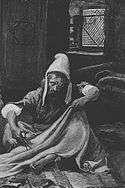
First reading — Exodus 38:21–39:1
In the first reading (עליה, aliyah), at Moses' direction, Aaron's son Ithamar oversaw the accounts of the Tabernacle, and the text sets forth the amounts of gold, silver, and copper that Bezalel, Oholiab, and their coworkers used.[4] The silver came from the half-shekel a head for each man 20 years old and older who was counted in the census.[5]
Second reading — Exodus 39:2–21
In the second reading (עליה, aliyah), Bezalel, Oholiab, and their coworkers made the priests' vestments, the ephod, and the breastpiece — just as God had commanded Moses.[6]
Third reading — Exodus 39:22–32
In the third reading (עליה, aliyah), Bezalel, Oholiab, and their coworkers made the robe, the tunics of fine linen, and the frontlet inscribed "Holy to the Lord" — just as God had commanded Moses.[7]
Fourth reading — Exodus 39:33–43
.jpg)
In the fourth reading (עליה, aliyah), they brought the Tabernacle and all its furnishings to Moses, and he blessed them.[8]
Fifth reading — Exodus 40:1–16
In the fifth reading (עליה, aliyah), God told Moses to set up the Tabernacle, and Moses did just as God had commanded him.[9]
Sixth reading — Exodus 40:17–27
In the sixth reading (עליה, aliyah), it was the first day of the second year of the Exodus that Moses erected the Tabernacle and its furnishings — just as God had commanded Moses.[10]
Seventh reading — Exodus 40:28–38
In the seventh reading (עליה, aliyah), Moses finished the work, and the cloud covered the Tent of Meeting, and God's Presence filled the Tabernacle.[11] When the cloud lifted from the Tabernacle, the Israelites would set out, and when the cloud did not lift, they would not set out.[12] And God's cloud rested over the Tabernacle by day, and fire would appear in it by night, throughout the Israelites' journeys.[13]
Readings according to the triennial cycle
Jews who read the Torah according to the triennial cycle of Torah reading may read the parashah according to a different schedule.[14]
In inner-Biblical interpretation
The parashah has parallels or is discussed in these Biblical sources:[15]
Exodus chapters 25–39
This is the pattern of instruction and construction of the Tabernacle and its furnishings:

| Item | Instruction | Construction | ||
|---|---|---|---|---|
| Order | Verses | Order | Verses | |
| The Sabbath | 16 | Exodus 31:12–17 | 1 | Exodus 35:1–3 |
| Contributions | 1 | Exodus 25:1–9 | 2 | Exodus 35:4–29 |
| Craftspeople | 15 | Exodus 31:1–11 | 3 | Exodus 35:30–36:7 |
| Tabernacle | 5 | Exodus 26:1–37 | 4 | Exodus 36:8–38 |
| Ark | 2 | Exodus 25:10–22 | 5 | Exodus 37:1–9 |
| Table | 3 | Exodus 25:23–30 | 6 | Exodus 37:10–16 |
| Menorah | 4 | Exodus 25:31–40 | 7 | Exodus 37:17–24 |
| Altar of Incense | 11 | Exodus 30:1–10 | 8 | Exodus 37:25–28 |
| Anointing Oil | 13 | Exodus 30:22–33 | 9 | Exodus 37:29 |
| Incense | 14 | Exodus 30:34–38 | 10 | Exodus 37:29 |
| Altar of Sacrifice | 6 | Exodus 27:1–8 | 11 | Exodus 38:1–7 |
| Laver | 12 | Exodus 30:17–21 | 12 | Exodus 38:8 |
| Tabernacle Court | 7 | Exodus 27:9–19 | 13 | Exodus 38:9–20 |
| Priestly Garments | 9 | Exodus 28:1–43 | 14 | Exodus 39:1–31 |
| Ordination Ritual | 10 | Exodus 29:1–46 | 15 | Leviticus 8:1–9:24 |
| Lamp | 8 | Exodus 27:20–21 | 16 | Numbers 8:1–4 |
Exodus chapter 39
2 Chronicles 1:5–6 reports that the bronze altar that Bezalel built, which they brought to Moses in Exodus 39:39, still stood before the Tabernacle in Solomon's time, and Solomon sacrificed a thousand burnt offerings on it.
Exodus chapters 39–40
The Priestly story of the Tabernacle in Exodus 39–40 echoes the Priestly story of creation in Genesis 1:1–2:3.[16] As the creation story unfolds in seven days,[17] the instructions about the Tabernacle unfold in seven speeches.[18] In both creation and Tabernacle accounts, the text notes the completion of the task.[19] In both creation and Tabernacle, the work done is seen to be good.[20] In both creation and Tabernacle, when the work is finished, God takes an action in acknowledgement.[21] In both creation and Tabernacle, when the work is finished, a blessing is invoked.[22] And in both creation and Tabernacle, God declares something "holy."[23]
Jeffrey Tigay noted[24] that the lampstand held seven candles,[25] Aaron wore seven sacral vestments,[26] the account of the building of the Tabernacle alludes to the creation account,[27] and the Tabernacle was completed on New Year’s day.[28] And Carol Meyers noted that Exodus 25:1–9 and 35:4–29 list seven kinds of substances — metals, yarn, skins, wood, oil, spices, and gemstones — signifying the totality of supplies.[29] Martin Buber and others noted that the language used to describe the building of the Tabernacle parallels that used in the story of creation:[30]
| Verses in Genesis | Texts | Words in Common | Verses in Exodus | Texts |
|---|---|---|---|---|
| 1:7, 16, 25 | 7And God made (וַיַּעַשׂ) the firmament, and divided the waters which were under the firmament from the waters which were above the firmament; and it was so. . . . 16And God made (וַיַּעַשׂ) the two great lights: the greater light to rule the day, and the lesser light to rule the night; and the stars. . . . 25And God made (וַיַּעַשׂ) the beast of the earth after its kind, and the cattle after their kind, and everything that creeps upon the ground after its kind; and God saw that it was good. | made
make וַיַּעַשׂ וְעָשׂוּ וְעָשִׂיתָ |
25:8, 10, 23, 31 | 8And let them make (וְעָשׂוּ) Me a sanctuary, that I may dwell among them. . . . 10And they shall make (וְעָשׂוּ) an ark of acacia-wood: two cubits and a half shall be the length thereof, and a cubit and a half the breadth thereof, and a cubit and a half the height thereof. . . . 23And you shall make (וְעָשִׂיתָ) a table of acacia-wood: two cubits shall be the length thereof, and a cubit the breadth thereof, and a cubit and a half the height thereof. . . . 31And you shall make (וְעָשִׂיתָ) a candlestick of pure gold: of beaten work shall the candlestick be made, even its base, and its shaft; its cups, its knops, and its flowers, shall be of one piece with it. |
| 2:1–2 | 1And the heaven and the earth were finished (וַיְכֻלּוּ), and all the host of them. 2And on the seventh day God finished (וַיְכַל) His work that He had made; and He rested on the seventh day from all His work that He had made. | finished
וַיְכֻלּוּ וַיְכַל וַתֵּכֶל |
39:32; 40:33 | 32Thus was finished (וַתֵּכֶל) all the work of the Tabernacle of the tent of meeting; and the children of Israel did according to all that the Lord commanded Moses, so did they. . . . 33And he reared up the court round about the tabernacle and the altar, and set up the screen of the gate of the court. So Moses finished (וַיְכַל) the work. |
| 1:31 | 31And God saw (וַיַּרְא) everything that He had made, and, behold (וְהִנֵּה), it was very good. And there was evening and there was morning, the sixth day. | saw . . . behold
וַיַּרְא . . . וְהִנֵּה |
39:43 | 43And Moses saw (וַיַּרְא) all the work, and, behold (וְהִנֵּה), they had done it; as the Lord had commanded, even so had they done it. And Moses blessed them. |
| 2:3 | 3And God blessed (וַיְבָרֶךְ) the seventh day, and hallowed it; because in it He rested from all His work that God in creating had made. | blessed
וַיְבָרֶךְ |
39:43 | 43And Moses saw all the work, and, behold, they had done it; as the Lord had commanded, even so had they done it. And Moses blessed (וַיְבָרֶךְ) them. |

In early nonrabbinic interpretation
The parashah has parallels or is discussed in these early nonrabbinic sources:[31]
Exodus chapter 38
Josephus taught that when the Israelites brought together the materials with great diligence, Moses set architects over the works by the command of God. And these were the very same people that the people themselves would have chosen, had the election been allowed to them: Bezalel, the son of Uri, of the tribe of Judah, the grandson of Miriam, the sister of Moses, and Oholiab, file son of Ahisamach, of the tribe of Dan.[32]
In classical rabbinic interpretation
The parashah is discussed in these rabbinic sources from the era of the Mishnah and the Talmud:[33]
Exodus chapter 38
Reading Exodus 38:21, "These are the accounts of the Tabernacle," Rabbi Tanhuma cited Proverbs 28:20, "A faithful man shall abound with blessings; but he that makes haste to be rich shall not be unpunished." Rabbi Tanhuma taught that God always brings blessings through a person of integrity, but one who is not faithful and "makes haste to be rich shall not be unpunished." The Midrash taught that "a faithful man" refers to Moses, who was God's confidant, as Numbers 12:7 reports, "My servant Moses . . . is trusted in all My house." Thus Solomon said in Proverbs 28:20, "A faithful man shall abound with blessings," because God blessed everything that Moses oversaw, on account of his trustworthiness. Another explanation of "A faithful man" is that it refers to Moses, who was made treasurer over the work of the Tabernacle. But our Rabbis taught (in Mishnah Shekalim 5:2[34]), "One must not appoint fewer than two people to control the finances of a city or community," and the Midrash asked whether Moses was not solely in charge. The Midrash answered that although Moses was the sole treasurer, he called others to audit the accounts. The Midrash noted that Exodus 38:21 says, "These are the accounts of the Tabernacle," and does not say, "which Moses rendered," but "which were rendered according to the commandment of Moses." Thus the accounts were rendered through Moses but, as Exodus 38:21 reports, "by the hand of Ithamar" (implying that Moses showed all the accounts to Ithamar).[35]
Reading Exodus 38:21, "as they were rendered according to the commandment of Moses," a Midrash taught that the Israelites did everything that they did by the command of Moses. And reading the continuation of Exodus 38:21, "through the service of the Levites, by the hand of Ithamar, the son of Aaron the priest," the Midrash taught that everything that Moses made was done through others. Even though everything was done with witnesses, as soon as the construction of the Tabernacle was completed, Moses wasted no time to promise the people the complete details of all the expenditures involved. Moses then began to expound in Exodus 38:21, "These are the accounts of the Tabernacle," saying how much he had expended on the Tabernacle. While engaged in this calculation, Moses completely forgot about 1,775 shekalim of silver that he had used for hooks for the pillars, and he became uneasy thinking to himself that the Israelites would find grounds to say that Moses took them for himself. So God opened the eyes of Moses to realize that the silver had been converted into hooks for the pillars. When the Israelites saw that the account now completely tallied, they were completely satisfied with the integrity of the work on the Tabernacle. And thus Exodus 38:21 says, "These are the accounts of the Tabernacle," to report that the accounts balanced. The Midrash asked why Moses had to account to the Israelites, seeing as God trusted Moses so implicitly that God said in Numbers 12:7, "My servant Moses is not so; he is trusted in all My house." The Midrash explained that Moses overheard certain Israelites scoffing behind his back, for Exodus 33:8 says, "And they (the Israelites) looked after Moses." The Midrash asked what the people would say about Moses. Rabbi Johanan taught that the people blessed his mother, for she never saw him, as he was always speaking with God and always wholly given over to his service. But Rabbi Hama said that they used to remark how fat and prosperous Moses looked. When Moses heard this, he vowed to give an account of everything. And this is why Exodus 38:21 says, "These are the accounts of the Tabernacle."[36]
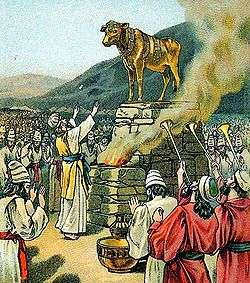
Rabbi Simeon son of Rabbi Ishmael interpreted the term "the Tabernacle of the testimony" in Exodus 38:21 to mean that the Tabernacle was God's testimony to the whole world that God had forgiven Israel for having made the Golden Calf. Rabbi Isaac explained with a parable. A king took a wife whom he dearly loved. He became angry with her and left her, and her neighbors taunted her, saying that he would not return. Then the king sent her a message asking her to prepare the king's palace and make the beds therein, for he was coming back to her on such-and-such a day. On that day, the king returned to her and became reconciled to her, entering her chamber and eating and drinking with her. Her neighbors at first did not believe it, but when they smelled the fragrant spices, they knew that the king had returned. Similarly, God loved Israel, bringing the Israelites to Mount Sinai, and giving them the Torah, but after only 40 days, they sinned with the Golden Calf. The heathen nations then said that God would not be reconciled with the Israelites. But when Moses pleaded for mercy on their behalf, God forgave them, as Numbers 14:20 reports, "And the Lord said: ‘I have pardoned according to your word.'" Moses then told God that even though he personally was quite satisfied that God had forgiven Israel, he asked that God might announce that fact to the nations. God replied that God would cause God's Shechinah to dwell in their midst, and thus Exodus 25:8 says, "And let them make Me a sanctuary, that I may dwell among them." And by that sign, God intended that all nations might know that God had forgiven the Israelites. And thus Exodus 38:21 calls it "the Tabernacle of the testimony," because the Tabernacle was a testimony that God had pardoned the Israelites' sins.[37]
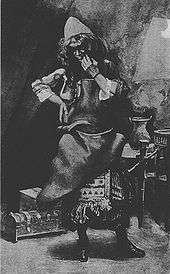
Rabbi Tanhuma taught in the name of Rav Huna that even the things that Bezalel did not hear from Moses he conceived of on his own exactly as they were told to Moses from Sinai. Rabbi Tanhuma said in the name of Rav Huna that one can deduce this from the words of Exodus 38:22, "And Bezalel the son of Uri, the son of Hur, of the tribe of Judah, made all that the Lord commanded Moses." For Exodus 38:22 does not say, "that Moses commanded him," but, "that the Lord commanded Moses."[38] And the Agadat Shir ha-Shirim taught that Bezalel and Oholiab went up Mount Sinai, where the heavenly Sanctuary was shown to them.[39]
A Midrash explained that Israel sinned with fire in making the Golden Calf, as Exodus 32:24 says, "And I cast it into the fire, and there came out this calf." And then Bezalel came and healed the wound (and the construction of the Tabernacle made atonement for the sins of the people in making the Golden Calf). The Midrash likened it to the words of Isaiah 54:16, "Behold, I have created the smith who blows the fire of coals." The Midrash taught that Bezalel was the smith whom God had created to address the fire. And the Midrash likened it to the case of a doctor's disciple who applied a plaster to a wound and healed it. When people began to praise him, his teacher, the doctor, said that they should praise the doctor, for he taught the disciple. Similarly, when everybody said that Bezalel had constructed the Tabernacle through his knowledge and understanding, God said that it was God who created him and taught him, as Isaiah 54:16 says, "Behold, I have created the smith." Thus Moses said in Exodus 35:30, "see, the Lord has called by name Bezalel."[40]
Exodus 35:30 identifies Bezalel's grandfather as Hur, whom either Rav or Samuel deduced was the son of Miriam and Caleb.[41] A Midrash explained that Exodus 35:30 mentions Hur because when the Israelites were about to serve the Golden Calf, Hur risked his life on God's behalf to prevent them from doing so, and they killed him. Whereupon God assured Hur that God would repay him for his sacrifice. The Midrash likened it to the case of a king whose legions rebelled against him, and his field marshal fought against the rebels, questioning how they could dare rebel against the king. In the end, the rebels killed the field marshal. The king reasoned that if the field marshal had given the king money, the king would have had to repay him. So even more so the king had an obligation to repay the field marshal when he gave his life on the king's behalf. The king rewarded the field marshal by ordaining that all his male offspring would become generals and officers. Similarly, when Israel made the Golden Calf, Hur gave his life for the glory of God. Thus God assured Hur that God would give all Hur's descendants a great name in the world. And thus Exodus 35:30 says, "see, the Lord has called by name Bezalel, the son of Uri, the son of Hur."[42]
Rabbi Johanan taught that God proclaims three things for God's Self: famine, plenty, and a good leader. 2 Kings 8:1 shows that God proclaims famine, when it says: "The Lord has called for a famine." Ezekiel 36:29 shows that God proclaims plenty, when it says: "I will call for the corn and will increase it." And Exodus 31:1–2 shows that God proclaims a good leader, when it says: "And the Lord spoke to Moses, saying, ‘See I have called by name Bezalel, the son of Uri.'" Rabbi Isaac taught that we cannot appoint a leader over a community without first consulting the people, as Exodus 35:30 says: "And Moses said unto the children of Israel: ‘See, the Lord has called by name Bezalel, the son of Uri.'" Rabbi Isaac taught that God asked Moses whether Moses considered Bezalel suitable. Moses replied that if God thought Bezalel suitable, surely Moses must also. God told Moses that, all the same, Moses should go and consult the people. Moses then asked the Israelites whether they considered Bezalel suitable. They replied that if God and Moses considered Bezalel suitable, then surely they had to, as well. Rabbi Samuel bar Nahmani said in the name of Rabbi Johanan that Bezalel (בְּצַלְאֵל, whose name can be read בְּצֵל אֶל, betzel El, "in the shadow of God") was so called because of his wisdom. When God told Moses (in Exodus 31:7) to tell Bezalel to make a tabernacle, an ark, and vessels, Moses reversed the order and told Bezalel to make an ark, vessels, and a tabernacle. Bezalel replied to Moses that as a rule, one first builds a house and then brings vessels into it, but Moses directed to make an ark, vessels, and a tabernacle. Bezalel asked where he would put the vessels. And Bezalel asked whether God had told Moses to make a tabernacle, an ark, and vessels. Moses replied that perhaps Bezalel had been in the shadow of God (בְּצֵל אֶל, betzel El) and had thus come to know this. Rav Judah taught in the name of Rav that Exodus 35:31 indicated that God endowed Bezalel with the same attribute that God used in creating the universe. Rav Judah said in the name of Rav that Bezalel knew how to combine the letters by which God created the heavens and earth. For Exodus 35:31 says (about Bezalel), "And He has filled him with the spirit of God, in wisdom and in understanding, and in knowledge," and Proverbs 3:19 says (about creation), "The Lord by wisdom founded the earth; by understanding He established the heavens," and Proverbs 3:20 says, "By His knowledge the depths were broken up."[43]
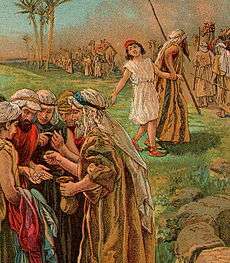
Doing the math implied by Exodus 36:4, Exodus 38:22, Joshua 14:7, and 1 Chronicles 2:19–20, the Gemara deduced that in earlier generations, a boy of eight could father children. Exodus 38:22 reports that "Bezalel, son of Uri, son of Hur, of the tribe of Judah, made all that the Lord had commanded Moses," when they built the Tabernacle. And 1 Chronicles 2:19–20 reports that Caleb fathered the Hur who fathered Uri who fathered Bezalel. Exodus 36:4 reports that "wise men . . . wrought all the work of the Sanctuary," so Bezalel must have been at least 13 years old to have been a man when he worked on the Tabernacle. A Baraita taught that Moses made the Tabernacle in the first year after the Exodus, and in the second, he erected it and sent out the spies, so the Gemara deduced that Bezalel must have been at least 14 years old when Moses sent out the spies, the year after Bezalel worked on the Tabernacle. And Joshua 14:7 reports that Caleb said that he was 40 years old when Moses sent him to spy out the land. Thus, the Gemara deduced that Caleb was only 26 years older than his great-grandson Bezalel. Deducting two years for the three pregnancies needed to create the three intervening generations, the Gemara concluded that each of Caleb, Hur, and Uri must have conceived his son at the age of eight.[44]
Rabbi Judah ben Simon taught that God required each of the Israelites to give a half-shekel (as reported in Exodus 38:26) because (as reported in Genesis 37:28) their ancestors had sold Joseph to the Ishmaelites for 20 shekels.[45]
Exodus chapter 39
A Midrash noted that the section recounting the setting up of the Tabernacle in Parashah Pekudei, in which, beginning with Exodus 39:1, nearly every paragraph concludes, "Even as the Lord commanded Moses,"[46] is followed by Leviticus 1:1: "And the Lord called to Moses." The Midrash compared this to the case of a king who commanded his servant to build him a palace. On everything the servant built, he wrote the name of the king. The servant wrote the name of the king on the walls, the pillars, and the roof beams. After some time the king entered the palace, and on everything he saw he found his name. The king thought that the servant had done him all this honor, and yet the servant remained outside. So the king had called that the servant might come right in. So, too, when God directed Moses to make God a Tabernacle, Moses wrote on everything he made "Even as the Lord commanded Moses." God thought that Moses had done God all this honor, and yet Moses remained outside. So God call Moses so that he might enter the innermost part of the Tabernacle. Therefore Leviticus 1:1 reports, "And the Lord called to Moses."[47] Rabbi Samuel bar Nahman said in the name of Rabbi Nathan that "as the Lord commanded" is written 18 times in the section recounting the setting up of the Tabernacle in Parashah Pekudei, corresponding to the 18 vertebrae of the spinal column. Likewise, the Sages instituted 18 benedictions of the Amidah prayer, corresponding to the 18 mentions of the Divine Name in the reading of the Shema, and also in Psalm 29. Rabbi Hiyya bar Abba taught that the 18 times "command" are counted only from Exodus 38:23, "And with him was Oholiab, the son of Ahisamach of the tribe of Dan," until the end of the Book of Exodus.[48]

Rabbi Judah ben Pazi noted that a similar word appears in both Genesis 1:6 — where rakya is translated as "firmament" — and Exodus 39:3 — where vayraku is translated as "and they flattened." He thus deduced from the usage in Exodus 39:3 that Genesis 1:6 taught that on the second day of creation, God spread the heavens flat like a cloth.[49] Or Rabbi Judah ben Simon deduced from Exodus 39:3 that Genesis 1:6 meant "let a lining be made for the firmament."[50]
The Rabbis taught in a Baraita that the robe (מְעִיל, me'il) mentioned in Exodus 28:4 was entirely of turquoise (תְּכֵלֶת, techelet), as Exodus 39:22 says, "And he made the robe of the ephod of woven work, all of turquoise." They made its hems of turquoise, purple, and crimson wool, twisted together and formed into the shape of pomegranates whose mouths were not yet opened (as overripe pomegranates open slightly) and in the shape of the cones of the helmets on children's heads. Seventy two bells containing 72 clappers were hung on the robe, 36 on each side (front and behind). Rabbi Dosa (or others say, Judah the Prince) said in the name of Rabbi Judah that there were 36 bells in all, 18 on each side.[51]
A Baraita taught that the High Priest's wore his miter so that hair was visible between the headplate and the miter described in Exodus 39:30–31.[52]
The Pesikta Rabbati taught that when the Israelites continually complained, God asked them to build the Tabernacle, so that they would be too busy to complain. But when, as Exodus 39:32 reports, all the work of the Tabernacle was finished, God exclaimed, "Woe is Me! It is finished!"[53]
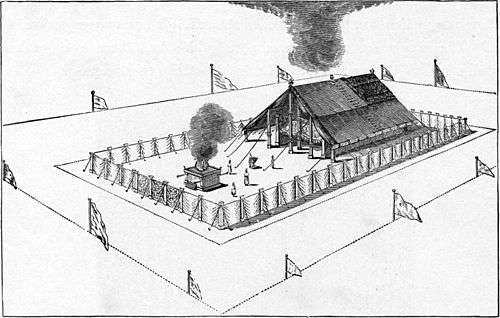
Reading Exodus 39:33, "and they brought the Tabernacle," a Midrash taught that on the day that the Tabernacle was set up, the Israelites rejoiced greatly because God then dwelt in their midst. And the people sang the words of Song of Songs 3:11, "Go forth, O you daughters of Zion, and gaze upon King Solomon, even upon the crown wherewith his mother has crowned him in the day of his espousals, and in the day of the gladness of his heart." "O you daughters of Zion" were the children who are distinguished as God's from among the peoples. "And gaze upon King Solomon" meant "gaze upon a King to whom all peace belongs" (reading the name Solomon as a play on the word "His peace") — that is, upon the King of kings, God. "Even upon the crown wherewith his mother has crowned him" referred to the Tabernacle, which was called a crown because just as a crown has beautiful designs, so was the Tabernacle beautifully designed. "In the day of his espousals" referred to Sinai (at the Revelation). "And in the day of the gladness of his heart" referred to Jerusalem (when God caused God's presence to dwell in the Temple in Jerusalem). According to another explanation, "in the day of his espousals" was the day when God was with Israel at the Red Sea, and "in the day of the gladness of his heart" was when God's presence dwelt in the Tent of Meeting. And according to yet another explanation, "in the day of his espousals" was in the Tabernacle, and "in the day of the gladness of his heart" was in the Temple (when they were erected).[54]
.jpg)
Exodus chapter 40
A Midrash taught that the priestly garments of which God spoke in Exodus 40:13 were in fact the garments for which Jacob prayed at Bethel in Genesis 28:20. The Midrash taught that Jacob did not ask simply for food and garments, but that God would promise to be with him and build up the world from him. And Jacob would know that God was with him and guarded him when God would raise up from him sons who would be priests, eating of the showbread and clothed in the priestly garments. The Midrash interpreted the words of Genesis 28:20, "bread to eat," to refer to the showbread, and "garments to put on" to refer to the priestly garments, for Exodus 40:13 says: "And you shall put upon Aaron the holy garments."[55]
A Midrash taught that many wise people were there, yet they had to come to Moses, for they could not erect the Tabernacle on their own. Moses excelled them all in skill, as Solomon said in Proverbs 31:29, "Many daughters have done valiantly, but you excel them all." So each of the wise people took a finished piece of work and came to Moses to present him the boards, the bars, and all the parts. As soon as Moses saw the parts, the Holy Spirit settled on him, and he set the Tabernacle up. The Midrash clarified that Moses did not set it up by himself, for miracles were performed with it, and it rose of its own accord, for Exodus 40:17 says (using the passive voice), "The Tabernacle was reared up." And the Midrash taught that Solomon's Temple, too, was built of its own accord.[56] Similarly, noting that Exodus 40:17 reports that "the Tabernacle was reared up" — using the passive voice — another Midrash told that when in Exodus 40:1–2 God told Moses to set up the Tabernacle, Moses protested that he did not know how to set it up. So God told Moses to begin working with his hands and make a show of setting it up, and the Tabernacle would stand up on its own. But God reassured Moses that God would record that Moses set it up, as Exodus 40:18 reports, "Moses reared up the Tabernacle."[57]
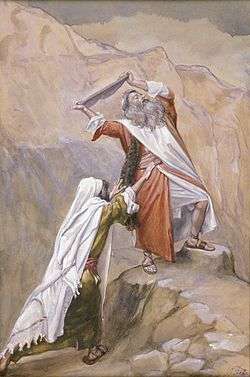
Rav Havivi (or others say Rav Assi of Hozna'ah) deduced from the words, "And it came to pass in the first month of the second year, on the first day of the month," in Exodus 40:17 that the Tabernacle was erected on the first of Nisan. With reference to this, a Tanna taught that the first of Nisan took ten crowns of distinction by virtue of the ten momentous events that occurred on that day.[58] The first of Nisan was: (1) the first day of the Creation,[59] (2) the first day of the princes' offerings,[60] (3) the first day for the priesthood to make the sacrificial offerings,[61] (4) the first day for public sacrifice, (5) the first day for the descent of fire from Heaven,[62] (6) the first for the priests' eating of sacred food in the sacred area, (7) the first for the dwelling of the Shechinah in Israel,[63] (8) the first for the Priestly Blessing of Israel,[64] (9) the first for the prohibition of the high places,[65] and (10) the first of the months of the year.[66]
In Deuteronomy 18:15, Moses foretold that "A prophet will the Lord your God raise up for you . . . like me," and Rabbi Johanan thus taught that prophets would have to be, like Moses, strong, wealthy, wise, and meek. Strong, for Exodus 40:19 says of Moses, "he spread the tent over the Tabernacle," and a Master taught that Moses himself spread it, and Exodus 26:16 reports, "Ten cubits shall be the length of a board." Similarly, the strength of Moses can be derived from Deuteronomy 9:17, in which Moses reports, "And I took the two tablets, and cast them out of my two hands, and broke them," and it was taught that the tablets were six handbreadths in length, six in breadth, and three in thickness. Wealthy, as Exodus 34:1 reports God's instruction to Moses, "Carve yourself two tablets of stone," and the Rabbis interpreted the verse to teach that the chips would belong to Moses. Wise, for Rav and Samuel both said that 50 gates of understanding were created in the world, and all but one were given to Moses, for Psalm 8:6 said of Moses, "You have made him a little lower than God." Meek, for Numbers 12:3 reports, "Now the man Moses was very meek."[67]
.jpg)
The Mishnah taught that any sacrifice performed by a priest who had not washed his hands and feet at the laver (described in Exodus 40:30–32) was invalid.[68]
Rabbi Jose the son of Rabbi Hanina taught that a priest was not permitted to wash in a laver that did not contain enough water to wash four priests, for Exodus 40:31 says, "That Moses and Aaron and his sons might wash their hands and their feet thereat." ("His sons" implies at least two priests, and adding Moses and Aaron makes four.)[69]
The Mishnah reported that the High Priest Ben Katin made 12 spigots for the laver, where there had been two before. Ben Katin also made a machine for the laver, so that its water would not become unfit by remaining overnight.[70]
.jpg)
Rabbi Zerika asked about an apparent contradiction of Scriptural passages in the presence of Rabbi Eleazar, or, according to another version, he asked in the name of Rabbi Eleazar. Exodus 40:35 reads: "And Moses was not able to enter into the tent of meeting because the cloud abode thereon," whereas Exodus 24:18 says: "And Moses entered into the midst of the cloud." The Gemara concluded that this teaches us that God took hold of Moses and brought him into the cloud. Alternatively, the school of Rabbi Ishmael taught in a Baraita that in Exodus 24:18, the word for "in the midst" (בְּתוֹךְ, be-tokh) appears, and it also appears in Exodus 14:22: "And the children of Israel went into the midst of the sea." Just as in Exodus 14:22, the word "in the midst" (בְּתוֹךְ, be-tokh) implies a path, as Exodus 14:22 says, "And the waters were a wall unto them," so here too in Exodus 24:18, there was a path (for Moses through the cloud).[71]
Reading the words of Exodus 40:38, "For over the Mishkan a cloud of God rested by day, and fire would appear in it by night," a Midrash taught that when the Israelites saw the pillar of cloud resting on the Mishkan, they rejoiced, thinking that God had been reconciled with them. But when night came, the pillar of fire descended and surrounded the Mishkan. All the Israelites saw it as one flame of fire and began to weep in sorrow, feeling that they had labored (building the Mishkan) for nothing, as all their work appeared to have been burnt up in a moment. When they arose early the next morning and saw the pillar of cloud encompassing the Mishkan, they immediately rejoiced with an inordinate joy.[72]
In modern interpretation
The parashah is discussed in these modern sources:
Exodus chapter 38
Exodus 38:24 reports that Bezalel and Oholiab used roughly a ton of gold in making the Tabernacle. According to one estimate, the metal listed in Exodus 38:24–29 amounted to 2,210 pounds of gold, 7,601 pounds of silver, and 5,350 pounds of copper.[73] By comparison, an inscription from Bubastis reports that the Ancient Egyptian king Osorkon I dedicated more than 391 tons of gold and silver objects to Egyptian temples in the first four years of his reign.[74] This table translates units of weight used in the Bible:[75]
| Unit | Texts | Ancient Equivalent | Modern Equivalent |
|---|---|---|---|
| gerah (גֵּרָה) | Exodus 30:13; Leviticus 27:25; Numbers 3:47; 18:16; Ezekiel 45:12 | 1/20 shekel | 0.6 gram; 0.02 ounce |
| bekah (בֶּקַע) | Genesis 24:22; Exodus 38:26 | 10 gerahs; half shekel | 6 grams; 0.21 ounce |
| pim (פִים) | Books of Samuel 13:21 | 2/3 shekel | 8 grams; 0.28 ounce |
| shekel (שֶּׁקֶל) | Exodus 21:32; 30:13, 15, 24; 38:24, 25, 26, 29 | 20 gerahs; 2 bekahs | 12 grams; 0.42 ounce |
| mina (maneh, מָּנֶה) | 1 Kings 10:17; Ezekiel 45:12; Ezra 2:69; Nehemiah 7:70 | 50 shekels | 0.6 kilogram; 1.32 pounds |
| talent (kikar, כִּכָּר) | Exodus 25:39; 37:24; 38:24, 25, 27, 29 | 3,000 shekels; 60 minas | 36 kilograms; 79.4 pounds |
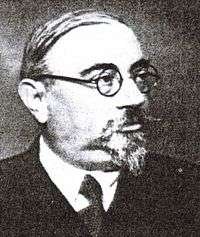
Exodus chapter 39

Noting the juxtaposition of the two terms “Tabernacle” (מִשְׁכַּן, Mishkan) and “Tent of Meeting” (אֹהֶל מוֹעֵד, Ohel Mo’ed) in Exodus 39:32, 40; 40:2, 6, 29; the mid-20th-century Italian-Israeli scholar Umberto Cassuto, formerly of the Hebrew University of Jerusalem, wrote that the two synonymous expressions stand in juxtaposition to stress the formal solemnity of the statement of the formal ending of the account of the Tabernacle’s construction.[76] Professor Nahum Sarna, formerly of Brandeis University, wrote that the combination of the two distinct terms for the sanctuary together expresses its dual function as the symbol of the indwelling of the Divine Presence in the camp of Israel and as the site of communication between God and Moses.[77] The 20th century Reform Rabbi Gunther Plaut concluded that the two terms probably reflect two traditions, one using the term “Tabernacle” (מִשְׁכַּן, Mishkan) and the other the term “Tent” (אֹהֶל, Ohel). Plaut reported that the school of Julius Wellhausen considered the “Tent” tradition the older and the “Tabernacle” passages as retrojections of the Priestly source and therefore as largely unhistorical. Plaut reported that another theory assigned the Ark and Tabernacle to a northern and the Tent of Meeting to a southern source and held that David, by putting the Ark into the Tent in 2 Samuel 6:17, united the tribes and traditions and that thereafter the term “Tabernacle of the Tent of Meeting” (מִשְׁכַּן אֹהֶל מוֹעֵד, Mishkan Ohel Mo-ed) was coined.[78]
Commandments
According to Maimonides and Sefer ha-Chinuch, there are no commandments in the parashah.[79]
In the liturgy
A Midrash taught that on the day that Moses completed construction of the Tabernacle (as reported in Exodus 40:33), he composed Psalm 91, which Jews read in the Pesukei D'Zimrah section of the morning Shacharit prayer service.[80]

Haftarah
Generally
The haftarah for the parashah is:
Sephardi — 1 Kings 7:40–50
Both the parashah and the haftarah in 1 Kings 7:40–50 report the leader's erection of the holy place — Moses' setting up the Tabernacle in the parashah,[81] and Solomon's building of the Temple in Jerusalem in the haftarah.[82] Both the parashah and the haftarah report that the builders finished the work: "Moses finished the work" (וַיְכַל מֹשֶׁה, אֶת-הַמְּלָאכָה, vayechal Mosheh et ha-melachah) in Exodus 40:33, and "so Hiram made an end of doing all the work" (וַיְכַל חִירָם, לַעֲשׂוֹת אֶת-כָּל-הַמְּלָאכָה, vayechal Chiram la'asot et kol ha-melachah) in 1 Kings 7:40.
Ashkenazi — 1 Kings 7:51–8:21
Similarly, both the parashah and the haftarah in 1 Kings 7:51–8:21 report the finishing of the leaders' work: "Moses finished the work" (וַיְכַל מֹשֶׁה, אֶת-הַמְּלָאכָה, vayechal Mosheh et ha-melachah) in Exodus 40:33, and "all the work that king Solomon wrought . . . was finished" (וַתִּשְׁלַם, כָּל-הַמְּלָאכָה, אֲשֶׁר עָשָׂה הַמֶּלֶךְ שְׁלֹמֹה, vatishlam kol ha-melachah asher asah ha-melech Shlomoh) in 1 Kings 7:51. And in both the parashah and the haftarah, a cloud and the Presence of the Lord fill the Sanctuary, indicating God's approval.[83]
On Shabbat Shekalim
When the parashah coincides with the special Sabbath Shabbat Shekalim (as it does in 2014), the haftarah is 2 Kings 12:1–17.
On Shabbat Rosh Chodesh
When the parashah coincides with Shabbat Rosh Chodesh (as it did in 2008), the haftarah is Isaiah 66:1–24.
Parashah Vayakhel–Pekudei
When parashah Vayakhel is combined with parashah Pekudei, the haftarah is:
- for Ashkenazi Jews: 1 Kings 7:51–8:21
- for Sephardi Jews: 1 Kings 7:40–50
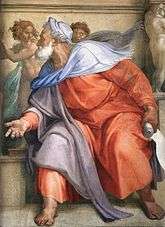
On Shabbat HaChodesh
When the parashah coincides with Shabbat HaChodesh ("Sabbath [of] the month," the special Sabbath preceding the Hebrew month of Nissan — as it does in 2017), the haftarah is:
- for Ashkenazi Jews: Ezekiel 45:16–46:18.
- for Sephardi Jews: Ezekiel 45:18–46:15.
On Shabbat HaChodesh, Jews read Exodus 12:1–20, in which God commands that "This month [Nissan] shall be the beginning of months; it shall be the first month of the year,"[84] and in which God issued the commandments of Passover.[85] Similarly, the haftarah in Ezekiel 45:21–25 discusses Passover. In both the parashah and the haftarah, God instructs the Israelites to apply blood to doorposts.[86]
On Shabbat Parah
When the parashah coincides with Shabbat Parah (the special Sabbath prior to Passover — as it does in 2015 and 2018), the haftarah is:
- for Ashkenazi Jews: Ezekiel 36:16–38.
- for Sephardi Jews: Ezekiel 36:16–36.
On Shabbat Parah, the Sabbath of the red heifer, Jews read Numbers 19:1–22, which describes the rites of purification using the red heifer (פָרָה אֲדֻמָּה, parah adumah). Similarly, the haftarah in Ezekiel 36 also describes purification. In both the special reading and the haftarah in Ezekiel 36, sprinkled water cleansed the Israelites.[87]
Notes
- ↑ "Torah Stats — Shemoth". Akhlah Inc. Retrieved February 23, 2013.
- ↑ "Parashat Pekudei". Hebcal. Retrieved March 5, 2015.
- ↑ See, e.g., The Schottenstein Edition Interlinear Chumash: Shemos/Exodus. Edited by Menachem Davis, pages 281–95. Brooklyn: Mesorah Publications, 2008. ISBN 1-4226-0204-4.
- ↑ Exodus 38:21–31.
- ↑ Exodus 38:25–26.
- ↑ Exodus 39:2–21.
- ↑ Exodus 39:22–32.
- ↑ Exodus 39:33–43.
- ↑ Exodus 40:1–16.
- ↑ Exodus 40:17–27.
- ↑ Exodus 40:33–34.
- ↑ Exodus 40:35–37.
- ↑ Exodus 40:38.
- ↑ See, e.g., "A Complete Triennial Cycle for Reading the Torah" (PDF). The Jewish Theological Seminary. Retrieved June 16, 2014.
- ↑ For more on inner-Biblical interpretation, see, e.g., Benjamin D. Sommer. “Inner-biblical Interpretation.” In The Jewish Study Bible: Second Edition. Edited by Adele Berlin and Marc Zvi Brettler, pages 1835–41. New York: Oxford University Press, 2014. ISBN 978-0-19-997846-5.
- ↑ See generally Jon D. Levenson. "Cosmos and Microcosm." In Creation and the Persistence of Evil: The Jewish Drama of Divine Omnipotence, pages 78–99. San Francisco: Harper & Row, 1988. ISBN 0-06-254845-X. See also Jeffrey H. Tigay. “Exodus.” In The Jewish Study Bible: Second Edition. Edited by Adele Berlin and Marc Zvi Brettler, page 157.
- ↑ (1) Genesis 1:1–5; (2) 1:6–8; (3) 1:9–13; (4) 1:14–19; (5) 1:20–23; (6) 1:24–31; (7) Genesis 2:1–3.
- ↑ (1) Exodus 25:1–30:10; (2) 30:11–16; (3) 30:17–21; (4) 30:22–33; (5) 30:34–37; (6) 31:1–11; (7) 31:12–17.
- ↑ Genesis 2:1; Exodus 39:32.
- ↑ Genesis 1:31; Exodus 39:43.
- ↑ Genesis 2:2; Exodus 40:33–34.
- ↑ Genesis 2:3; Exodus 39:43.
- ↑ Genesis 2:3; Exodus 40:9–11.
- ↑ Jeffrey H. Tigay. “Exodus.” In The Jewish Study Bible: Second Edition. Edited by Adele Berlin and Marc Zvi Brettler, page 157.
- ↑ Exodus 25:37.
- ↑ Exodus 28:1–39.
- ↑ Compare Exodus 39:32 to Genesis 2:1–3; Exodus 39:43 to Genesis 1:31; and Exodus 40:33 to Genesis 2:2.
- ↑ Exodus 40:17.
- ↑ Carol Meyers. “Exodus.” In The New Oxford Annotated Bible: New Revised Standard Version With The Apocrypha: An Ecumenical Study Bible. Edited by Michael D. Coogan, Marc Z. Brettler, Carol A. Newsom, and Pheme Perkins, page 117. New York: Oxford University Press, Revised 4th Edition 2010. ISBN 0-19-528955-2.
- ↑ See generally Sorel Goldberg Loeb and Barbara Binder Kadden. Teaching Torah: A Treasury of Insights and Activities, page 157. Denver: A.R.E. Publishing, 1997. ISBN 0-86705-041-1.
- ↑ For more on early nonrabbinic interpretation, see, e.g., Esther Eshel. “Early Nonrabbinic Interpretation.” In The Jewish Study Bible: Second Edition. Edited by Adele Berlin and Marc Zvi Brettler, pages 1841–59.
- ↑ Josephus. Antiquities of the Jews book 3, chapter 6, paragraph 1, clause 104. Circa 93–94. Reprinted in, e.g., The Works of Josephus: Complete and Unabridged, New Updated Edition. Translated by William Whiston, page 86. Peabody, Massachusetts: Hendrickson Publishers, 1987. ISBN 0-913573-86-8.
- ↑ For more on classical rabbinic interpretation, see, e.g., Yaakov Elman. “Classical Rabbinic Interpretation.” In The Jewish Study Bible: Second Edition. Edited by Adele Berlin and Marc Zvi Brettler, pages 1859–78.
- ↑ Mishnah Shekalim 5:2. Land of Israel, circa 200 CE. Reprinted in, e.g., The Mishnah: A New Translation. Translated by Jacob Neusner, page 259. New Haven: Yale University Press, 1988. ISBN 0-300-05022-4.
- ↑ Exodus Rabbah 51:1. 10th century. Reprinted in, e.g., Midrash Rabbah: Exodus. Translated by Simon M. Lehrman, volume 3, page 562. London: Soncino Press, 1939. ISBN 0-900689-38-2.
- ↑ Exodus Rabbah 51:6. Reprinted in, e.g., Midrash Rabbah: Exodus. Translated by Simon M. Lehrman, volume 3, page 567–68.
- ↑ Exodus Rabbah 51:4. Reprinted in, e.g., Midrash Rabbah: Exodus. Translated by Simon M. Lehrman, volume 3, pages 564–65.
- ↑ Jerusalem Talmud Peah 5a. Land of Israel, circa 400 CE. Reprinted in, e.g., Talmud Yerushalmi. Elucidated by Feivel Wahl, Henoch Moshe Levin, Menachem Goldberger, Avrohom Neuberger, Mendy Wachsman, Michoel Weiner, and Abba Zvi Naiman; edited by Chaim Malinowitz, Yisroel Simcha Schorr, and Mordechai Marcus, volume 3, page 5a2. Brooklyn: Mesorah Publications, 2006. ISBN 1-4226-0236-2.
- ↑ Agadat Shir ha-Shirim 5, 36–37. 10th century. Quoted in Louis Ginzberg. Legends of the Jews, volume 6, page 63. Philadelphia: Jewish Publication Society, 1928.
- ↑ Exodus Rabbah 48:5. Reprinted in, e.g., Midrash Rabbah: Exodus. Translated by Simon M. Lehrman, volume 3, pages 551–52.
- ↑ Babylonian Talmud Sotah 11b. Babylonia, 6th century. Reprinted in, e.g., Koren Talmud Bavli: Sota. Commentary by Adin Even-Israel (Steinsaltz), volume 20, page 69. Jerusalem: Koren Publishers, 2015. ISBN 978-965-301-581-4.
- ↑ Exodus Rabbah 48:3. Reprinted in, e.g., Midrash Rabbah: Exodus. Translated by Simon M. Lehrman, volume 3, page 549.
- ↑ Babylonian Talmud Berakhot 55a. Reprinted in, e.g., Koren Talmud Bavli: Berakhot. Commentary by Adin Even-Israel (Steinsaltz), volume 1, pages 356–57. Jerusalem: Koren Publishers, 2012. ISBN 978-965-301-563-0.
- ↑ Babylonian Talmud Sanhedrin 69b.
- ↑ Genesis Rabbah 84:18. Land of Israel, 5th century. Reprinted in, e.g., Midrash Rabbah: Genesis. Translated by Harry Freedman and Maurice Simon, volume 2, page 783. London: Soncino Press, 1939. ISBN 0-900689-38-2.
- ↑ See Exodus 38:22; 39:1, 5, 7, 21, 26, 29, 31, 32, 42, and 43; and 40:16, 19, 21, 23, 25, 27, 29, and 32.
- ↑ Leviticus Rabbah 1:7. Land of Israel, 5th century. Reprinted in, e.g., Midrash Rabbah: Leviticus. Translated by Harry Freedman and Maurice Simon, volume 4, page 11. London: Soncino Press, 1939. ISBN 0-900689-38-2.
- ↑ Leviticus Rabbah 1:8. Reprinted in, e.g., Midrash Rabbah: Leviticus. Translated by Harry Freedman and Maurice Simon, volume 4, pages 11–12.
- ↑ Jerusalem Talmud Berakhot 6a. Reprinted in, e.g., Talmud Yerushalmi. Elucidated by Eliezer Herzka, Eliezer Lachman, Henoch Moshe Levin, Avrohom Neuberger, Michoel Weiner, Abba Zvi Naiman, Zev Meisels, and Dovid Arye Kaufman; edited by Chaim Malinowitz, Yisroel Simcha Schorr, and Mordechai Marcus, volume 1, page 6a2. Brooklyn: Mesorah Publications, 2005. ISBN 1-4226-0234-6.
- ↑ Genesis Rabbah 4:2. Reprinted in, e.g., Midrash Rabbah: Genesis. Translated by Harry Freedman and Maurice Simon, volume 1, page 27.
- ↑ Babylonian Talmud Zevachim 88b. Reprinted in, e.g., Talmud Bavli. Elucidated by Israel Schneider, Yosef Widroff, Mendy Wachsman, Dovid Katz, Zev Meisels, and Feivel Wahl; edited by Yisroel Simcha Schorr and Chaim Malinowitz, volume 57, page 88b1. Brooklyn: Mesorah Publications, 1996. ISBN 1-57819-615-9.
- ↑ Babylonian Talmud Zevachim 19a.
- ↑ Pesikta Rabbati 5 and 9. Circa 845. Quoted in Sorel Goldberg Loeb and Barbara Binder Kadden. Teaching Torah: A Treasury of Insights and Activities, page 156.
- ↑ Exodus Rabbah 52:5. Reprinted in, e.g., Midrash Rabbah: Exodus. Translated by Simon M. Lehrman, volume 3, pages 578–81.
- ↑ Exodus Rabbah 19:4. Reprinted in, e.g., Midrash Rabbah: Exodus. Translated by Simon M. Lehrman, volume 3, pages 232–33.
- ↑ Exodus Rabbah 52:4. Reprinted in, e.g., Midrash Rabbah: Exodus. Translated by Simon M. Lehrman, volume 3, page 578.
- ↑ Midrash Tanhuma Pekudei 11. 6th–7th century. Reprinted in, e.g., Metsudah Midrash Tanchuma. Translated and annotated by Avraham Davis; edited by Yaakov Y.H. Pupko, volume 4, pages 443–49. Monsey, New York: Eastern Book Press, 2006.
- ↑ Babylonian Talmud Shabbat 87b. Reprinted in, e.g., Koren Talmud Bavli: Shabbat · Part Two. Commentary by Adin Even-Israel (Steinsaltz), volume 3, page 30. Jerusalem: Koren Publishers, 2012. ISBN 978-965-301-565-4.
- ↑ See Genesis 1:1–5.
- ↑ See Numbers 7:10–17.
- ↑ See Leviticus 9:1–21.
- ↑ See Leviticus 9:24.
- ↑ See Exodus 25:8.
- ↑ See Leviticus 9:22, employing the blessing prescribed by Numbers 6:22–27.
- ↑ See Leviticus 17:3–4.
- ↑ See Exodus 12:2.
- ↑ Babylonian Talmud Nedarim 38a. Reprinted in, e.g., Koren Talmud Bavli: Nedarim. Commentary by Adin Even-Israel (Steinsaltz), volume 18, page 152. Jerusalem: Koren Publishers, 2015. ISBN 978-965-301-579-1.
- ↑ Mishnah Zevachim 2:1. Reprinted in, e.g., The Mishnah: A New Translation. Translated by Jacob Neusner, pages 700–01. Babylonian Talmud Zevachim 15b. Reprinted in, e.g., Talmud Bavli. Elucidated by Abba Zvi Naiman, Israel Schneider, and Michoel Weiner; edited by Yisroel Simcha Schorr and Chaim Malinowitz, volume 55, page 15b3. Brooklyn: Mesorah Publications, 1995. ISBN 1-57819-612-4.
- ↑ Babylonian Talmud Zevachim 19b. Reprinted in, e.g., Talmud Bavli. Elucidated by Abba Zvi Naiman, Israel Schneider, and Michoel Weiner; edited by Yisroel Simcha Schorr and Chaim Malinowitz, volume 55, page 19b2.
- ↑ Mishnah Yoma 3:10. Reprinted in, e.g., The Mishnah: A New Translation. Translated by Jacob Neusner, page 269. Babylonian Talmud Yoma 37a. Babylonia, 6th century. Reprinted in, e.g., Koren Talmud Bavli: Yoma. Commentary by Adin Even-Israel (Steinsaltz), volume 9, page 174. Jerusalem: Koren Publishers, 2013. ISBN 978-965-301-570-8.
- ↑ Babylonian Talmud Yoma 4b. Reprinted in, e.g., Talmud Bavli. Elucidated by Abba Zvi Naiman, Michoel Weiner, Yosef Widroff, Moshe Zev Einhorn, Israel Schneider, and Zev Meisels; edited by Yisroel Simcha Schorr and Chaim Malinowitz, volume 13, page 4b3. Brooklyn: Mesorah Publications, 1998. ISBN 1-57819-660-4.
- ↑ Midrash HaGadol 40:38. Quoted in Avivah Gottlieb Zornberg. The Particulars of Rapture: Reflections on Exodus, page 492. New York: Doubleday, 2001. ISBN 0-385-49152-2.
- ↑ See John I. Durham. Word Biblical Commentary: Volume 3: Exodus, page 490. Waco, Texas: Word Books, 1987. ISBN 0-8499-0202-9.
- ↑ John Taylor. "The Third Intermediate Period (1069–664 BC)." In The Oxford History of Ancient Egypt. Edited by Ian Shaw, page 351. Oxford: Oxford University Press, 2000. ISBN 0-19-815034-2.
- ↑ Bruce Wells. "Exodus." In Zondervan Illustrated Bible Backgrounds Commentary. Edited by John H. Walton, volume 1, page 258. Grand Rapids, Michigan: Zondervan, 2009. ISBN 978-0-310-25573-4.
- ↑ Umberto Cassuto. A Commentary on the Book of Exodus. Jerusalem, 1951. Translated by Israel Abrahams, page 476. Jerusalem: The Magnes Press, The Hebrew University, 1967.
- ↑ Nahum M. Sarna. The JPS Torah Commentary: Exodus: The Traditional Hebrew Text with the New JPS Translation, page 234. Philadelphia: Jewish Publication Society, 1991. ISBN 0-8276-0327-4. See also Carol Meyers. “Exodus.” In The New Oxford Annotated Bible: New Revised Standard Version with the Apocrypha: An Ecumenical Study Bible. Edited by Michael D. Coogan, Marc Z. Brettler, Carol A. Newsom, and Pheme Perkins, page 138. Jeffrey H. Tigay. “Exodus.” In The Jewish Study Bible: Second Edition. Edited by Adele Berlin and Marc Zvi Brettler, pages 157, 190.
- ↑ W. Gunther Plaut. The Torah: A Modern Commentary: Revised Edition. Revised edition edited by David E.S. Stern, page 635. New York: Union for Reform Judaism, 2006. ISBN 0-8074-0883-2.
- ↑ Maimonides. The Commandments: Sefer Ha-Mitzvoth of Maimonides. Translated by Charles B. Chavel, 2 volumes. London: Soncino Press, 1967. ISBN 0-900689-71-4. Sefer HaHinnuch: The Book of [Mitzvah] Education. Translated by Charles Wengrov, 1:433. Jerusalem: Feldheim Publishers, 1991. ISBN 0-87306-179-9.
- ↑ The Schottenstein Edition Siddur for the Sabbath and Festivals with an Interlinear Translation. Edited by Menachem Davis, page 272. Brooklyn: Mesorah Publications, 2002. ISBN 1-57819-697-3.
- ↑ Exodus 40:18.
- ↑ 1 Kings 7:40–50.
- ↑ Exodus 40:34–35; 1 Kings 8:10–11.
- ↑ Exodus 12:2.
- ↑ Exodus 12:3–20.
- ↑ Exodus 12:7; Ezekiel 45:19.
- ↑ Numbers 19:18; Ezekiel 36:25.
Further reading
The parashah has parallels or is discussed in these sources:
Biblical
- Psalms 78:5 (testimony); 93:5 (God's holy place); and 133:2 (anointing Aaron).
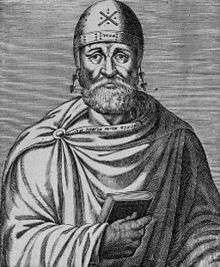
Early nonrabbinic
- Philo. Who Is the Heir of Divine Things? 26:131. Alexandria, Egypt, early 1st Century C.E.. Reprinted in, e.g., The Works of Philo: Complete and Unabridged, New Updated Edition. Translated by Charles Duke Yonge, 287. Peabody, Massachusetts: Hendrickson Publishers, 1993. ISBN 0-943575-93-1.
- Josephus, Antiquities of the Jews 3:6:1–10:1. Circa 93–94. Reprinted in, e.g., The Works of Josephus: Complete and Unabridged, New Updated Edition. Translated by William Whiston, 85–95. Peabody, Massachusetts: Hendrickson Publishers, 1987. ISBN 0-913573-86-8.
Classical rabbinic
- Seder Olam Rabbah, chapter 7. 2nd century CE. Reprinted in, e.g., Seder Olam: The Rabbinic View of Biblical Chronology. Translated and with commentary by Heinrich W. Guggenheimer, pages 79–87. Lanham, Maryland: Jason Aronson, 1998. ISBN 0-7657-6021-5.
- Mishnah: Shekalim 5:2; Yoma 3:10; Zevachim 2:1. Land of Israel, circa 200 CE. Reprinted in, e.g., The Mishnah: A New Translation. Translated by Jacob Neusner, pages 259, 269, 700–01. New Haven: Yale University Press, 1988. ISBN 0-300-05022-4.
- Tosefta: Zevachim 1:8; Menachot 7:7–8. Land of Israel, circa 300 C.E. Reprinted in, e.g., The Tosefta: Translated from the Hebrew, with a New Introduction. Translated by Jacob Neusner, volume 2, pages 1310, 1434–35. Peabody, Massachusetts: Hendrickson Publishers, 2002. ISBN 1-56563-642-2.
- Genesis Rabbah 3:9; 4:2; 84:18. Land of Israel, 5th Century. Reprinted in, e.g., Midrash Rabbah: Genesis. Translated by Harry Freedman and Maurice Simon, volume 1, pages 25, 27; volume 2, page 783. London: Soncino Press, 1939. ISBN 0-900689-38-2.
.jpg)
- Jerusalem Talmud: Berakhot 6a; Peah 5a; Kilayim 76a; Shabbat 20b; Sukkah 8a, 27a; Rosh Hashanah 2b, 6a; Taanit 10b; Sanhedrin 12a. Land of Israel, circa 400 CE. Reprinted in, e.g., Talmud Yerushalmi. Edited by Chaim Malinowitz, Yisroel Simcha Schorr, and Mordechai Marcus, volumes 1, 3, 5, 13, 22, 24–25. Brooklyn: Mesorah Publications, 2005–2014.
- Babylonian Talmud: Shabbat 28a, 87b; Yoma 4b, 6a, 12a–b, 32a, 71b; Sukkah 7b, 21a; Rosh Hashanah 3a; Taanit 29a; Megillah 29b; Yevamot 4b; Nedarim 38a; Sotah 37a, 38a; Sanhedrin 69b; Zevachim 19b, 22a, 58b, 119a–b; Menachot 62a, 98a, 99a; Chullin 138a; Bekhorot 5a, 44a; Arakhin 3b. Babylonia, 6th Century. Reprinted in, e.g., Talmud Bavli. Edited by Yisroel Simcha Schorr, Chaim Malinowitz, and Mordechai Marcus, 72 volumes. Brooklyn: Mesorah Pubs., 2006.
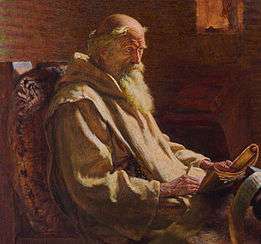
Medieval
- Bede. Of the Tabernacle and Its Vessels, and of the Priestly Vestments. Monkwearmouth, England, 720s. Reprinted in Bede: On the Tabernacle. Translated with notes and introduction by Arthur G. Holder. Liverpool: Liverpool University Press, 1994. ISBN 0-85323-378-0.
- Exodus Rabbah 51:1–52:5. 10th Century. 10th Century. Reprinted in, e.g., Midrash Rabbah: Exodus. Translated by S. M. Lehrman, 3:562–81. London: Soncino Press, 1939. ISBN 0-900689-38-2.

- Rashi. Commentary. Exodus 38–40. Troyes, France, late 11th Century. Reprinted in, e.g., Rashi. The Torah: With Rashi's Commentary Translated, Annotated, and Elucidated. Translated and annotated by Yisrael Isser Zvi Herczeg, volume 2, pages 507–24. Brooklyn: Mesorah Publications, 1994. ISBN 0-89906-027-7.
- Rashbam. Commentary on the Torah. Troyes, early 12th century. Reprinted in, e.g., Rashbam's Commentary on Exodus: An Annotated Translation. Edited and translated by Martin I. Lockshin, pages 431–38. Atlanta: Scholars Press, 1997. ISBN 0-7885-0225-5.
- Judah Halevi. Kuzari. 3:23. Toledo, Spain, 1130–1140. Reprinted in, e.g., Jehuda Halevi. Kuzari: An Argument for the Faith of Israel. Introduction by Henry Slonimsky, page 162. New York: Schocken, 1964. ISBN 0-8052-0075-4.

- Abraham ibn Ezra. Commentary on the Torah. France, 1153. Reprinted in, e.g., Ibn Ezra's Commentary on the Pentateuch: Exodus (Shemot). Translated and annotated by H. Norman Strickman and Arthur M. Silver, volume 2, pages 747–66. New York: Menorah Publishing Company, 1996. ISBN 0-932232-08-6.
- Maimonides. The Guide for the Perplexed. Cairo, Egypt, 1190. Reprinted in, e.g., Moses Maimonides. The Guide for the Perplexed. Translated by Michael Friedländer, pages 29, 96. New York: Dover Publications, 1956. ISBN 0-486-20351-4.

- Hezekiah ben Manoah. Hizkuni. France, circa 1240. Reprinted in, e.g., Chizkiyahu ben Manoach. Chizkuni: Torah Commentary. Translated and annotated by Eliyahu Munk, volume 3, pages 651–55. Jerusalem: Ktav Publishers, 2013. ISBN 978-1-60280-261-2.
- Nachmanides. Commentary on the Torah. Jerusalem, circa 1270. Reprinted in, e.g., Ramban (Nachmanides): Commentary on the Torah. Translated by Charles B. Chavel, volume 2, pages 609–26. New York: Shilo Publishing House, 1973. ISBN 0-88328-007-8.

- Zohar part 2, pages 220a–269a. Spain, late 13th Century. Reprinted in, e.g., The Zohar: Pritzker Edition. Translation and commentary by Daniel C. Matt, volume 6, pages 258–415. Stanford: Stanford University Press, 2011. ISBN 978-0-8047-7663-9.
- Bahya ben Asher. Commentary on the Torah. Spain, early 14th century. Reprinted in, e.g., Midrash Rabbeinu Bachya: Torah Commentary by Rabbi Bachya ben Asher. Translated and annotated by Eliyahu Munk, volume 4, pages 1438–62. Jerusalem: Lambda Publishers, 2003. ISBN 965-7108-45-4.
- Jacob ben Asher (Baal Ha-Turim). Commentary on the Torah. Early 14th century. Reprinted in, e.g., Baal Haturim Chumash: Shemos/Exodus. Translated by Eliyahu Touger; edited and annotated by Avie Gold, volume 2, pages 959–83. Brooklyn: Mesorah Publications, 2000. ISBN 1-57819-129-7.
- Isaac ben Moses Arama. Akedat Yizhak (The Binding of Isaac). Late 15th century. Reprinted in, e.g., Yitzchak Arama. Akeydat Yitzchak: Commentary of Rabbi Yitzchak Arama on the Torah. Translated and condensed by Eliyahu Munk, volume 1, pages 535–44. New York, Lambda Publishers, 2001. ISBN 965-7108-30-6.
Modern
- Abraham Saba. Ẓeror ha-Mor (Bundle of Myrrh). Fez, Morocco, circa 1500. Reprinted in, e.g., Tzror Hamor: Torah Commentary by Rabbi Avraham Sabba. Translated and annotated by Eliyahu Munk, volume 3, pages 1229–38. Jerusalem, Lambda Publishers, 2008. ISBN 978-965-524-013-9.
- Joseph Garçon. "Sermon on Elleh Fequde." Salonika, 1500. In Marc Saperstein. Jewish Preaching, 1200–1800: An Anthology, pages 199–216. New Haven: Yale University Press, 1989. ISBN 0-300-04355-4.
- Obadiah ben Jacob Sforno. Commentary on the Torah. Venice, 1567. Reprinted in, e.g., Sforno: Commentary on the Torah. Translation and explanatory notes by Raphael Pelcovitz, pages 486–95. Brooklyn: Mesorah Publications, 1997. ISBN 0-89906-268-7.
- Moses Almosnino. "Sermon on Elleh Fequde." Salonika, 1568. In Marc Saperstein. Jewish Preaching, 1200–1800: An Anthology, pages 217–39. New Haven: Yale University Press, 1989. ISBN 0-300-04355-4.
- Moshe Alshich. Commentary on the Torah. Safed, circa 1593. Reprinted in, e.g., Moshe Alshich. Midrash of Rabbi Moshe Alshich on the Torah. Translated and annotated by Eliyahu Munk, volume 2, pages 615–18. New York, Lambda Publishers, 2000. ISBN 965-7108-13-6.
- Shlomo Ephraim Luntschitz. Kli Yakar. Lublin, 1602. Reprinted in, e.g., Kli Yakar: Shemos. Translated by Elihu Levine, volume 2, pages 372–93. Southfield, Michigan: Targum Press/Feldheim Publishers, 2007. ISBN 1-56871-422-X.
.jpg)
- Thomas Hobbes. Leviathan, 4:44. England, 1651. Reprint edited by C. B. Macpherson, page 643. Harmondsworth, England: Penguin Classics, 1982. ISBN 0-14-043195-0.
- Chaim ibn Attar. Ohr ha-Chaim. Venice, 1742. Reprinted in Chayim ben Attar. Or Hachayim: Commentary on the Torah. Translated by Eliyahu Munk, volume 2, pages 909–23. Brooklyn: Lambda Publishers, 1999. ISBN 965-7108-12-8.
- Yitzchak Magriso. Me'am Lo'ez. Constantinople, 1746. Reprinted in Yitzchak Magriso. The Torah Anthology: Me'am Lo'ez. Translated by Aryeh Kaplan, volume 10, pages 249–321. Jerusalem: Moznaim Publishing, 1991. ISBN 0-940118-00-9.

- Nachman of Breslov. Teachings. Bratslav, Ukraine, before 1811. Reprinted in Rebbe Nachman's Torah: Breslov Insights into the Weekly Torah Reading: Exodus-Leviticus. Compiled by Chaim Kramer; edited by Y. Hall, pages 292–98. Jerusalem: Breslov Research Institute, 2011. ISBN 978-1-928822-53-0.
- Moritz Markus Kalisch. A Historical and Critical Commentary on the Old Testament with a New Translation: Exodus, pages 455–62. London: Longman, Brown, Green, and Longmans, 1855. Reprinted in, e.g., RareBooksClub.com, 2012. ISBN 1-236-08460-8.
- Samson Raphael Hirsch. The Pentateuch: Exodus. Translated by Isaac Levy, volume 2, pages 694–712. Gateshead: Judaica Press, 2nd edition 1999. ISBN 0-910818-12-6. Originally published as Der Pentateuch uebersetzt und erklaert. Frankfurt, 1867–1878.

- Samuel David Luzzatto (Shadal). Commentary on the Torah. Padua, 1871. Reprinted in, e.g., Samuel David Luzzatto. Torah Commentary. Translated and annotated by Eliyahu Munk, volume 3, pages 895–96. New York: Lambda Publishers, 2012. ISBN 978-965-524-067-2.
- Yehudah Aryeh Leib Alter. Sefat Emet. Góra Kalwaria (Ger), Poland, before 1906. Excerpted in The Language of Truth: The Torah Commentary of Sefat Emet. Translated and interpreted by Arthur Green, pages 139–43. Philadelphia: Jewish Publication Society, 1998. ISBN 0-8276-0650-8. Reprinted 2012. ISBN 0-8276-0946-9.
- Benno Jacob. The Second Book of the Bible: Exodus. London, 1940. Translated by Walter Jacob, pages 1032–48. Hoboken, New Jersey: KTAV Publishing House, 1992. ISBN 0-88125-028-7.
- Umberto Cassuto. A Commentary on the Book of Exodus. Jerusalem, 1951. Translated by Israel Abrahams, pages 468–85. Jerusalem: The Magnes Press, The Hebrew University, 1967.
- Elie Munk. The Call of the Torah: An Anthology of Interpretation and Commentary on the Five Books of Moses. Translated by E.S. Mazer, volume 2, pages 530–51. Brooklyn: Mesorah Publications, 1995. ISBN 0-89906-042-0. Originally published as La Voix de la Thora. Paris: Fondation Samuel et Odette Levy, 1981.
- Victor (Avigdor) Hurowitz. “The Priestly Account of Building the Tabernacle.” Journal of the American Oriental Society, volume 105 (number 1) (January-March 1985): pages 21–30.
- Richard Elliott Friedman. "A Brilliant Mistake" and "The Sacred Tent." In Who Wrote the Bible?, pages 161–87. New York: Summit Books, 1987. ISBN 0-671-63161-6.
- Gabriel Josipovici. "Building the Tabernacle." In The Book of God: A Response to the Bible, pages 90–107. New Haven: Yale University Press, 1988. ISBN 0-300-04320-1.
- Jon D. Levenson. "Cosmos and Microcosm." In Creation and the Persistence of Evil: The Jewish Drama of Divine Omnipotence, pages 78–99. San Francisco: Harper & Row, 1988. ISBN 0-06-254845-X.
- Craig R. Koester. Dwelling of God: The Tabernacle in the Old Testament, Intertestamental Jewish Literature, and the New Testament. Washington: Catholic Biblical Association of America, 1989. ISBN 0-915170-21-3.
- Harvey J. Fields. A Torah Commentary for Our Times: Volume II: Exodus and Leviticus, pages 86–94. New York: UAHC Press, 1991. ISBN 0-8074-0334-2.
- Richard Elliott Friedman. “Tabernacle.” in Anchor Bible Dictionary. Edited by David Noel Freedman, volume 6, pages 292–300. New York: Doubleday, 1992. ISBN 0-385-26190-X.
- Nahum M. Sarna. The JPS Torah Commentary: Exodus: The Traditional Hebrew Text with the New JPS Translation, pages 231–37. Philadelphia: Jewish Publication Society, 1991. ISBN 0-8276-0327-4.
- Nehama Leibowitz. New Studies in Shemot (Exodus), volume 2, pages 644–53, 689–709. Jerusalem: Haomanim Press, 1993. Reprinted as New Studies in the Weekly Parasha. Lambda Publishers, 2010. ISBN 965-524-038-X.
- Walter Brueggemann. “The Book of Exodus.” In The New Interpreter's Bible. Edited by Leander E. Keck, volume 1, pages 972–81. Nashville: Abingdon Press, 1994. ISBN 0-687-27814-7.
- Judith S. Antonelli. "Women's Wisdom." In In the Image of God: A Feminist Commentary on the Torah, pages 221–30. Northvale, New Jersey: Jason Aronson, 1995. ISBN 1-56821-438-3.
- Victor Avigdor Hurowitz. [http://www.jstor.org/stable/1454824 “The Form and Fate of the Tabernacle: Reflections on a Recent Proposal.” The Jewish Quarterly Review, volume 86 (number 1/2) (July-October 1995): pages 127–51.
- Ellen Frankel. The Five Books of Miriam: A Woman’s Commentary on the Torah, pages 146–48. New York: G. P. Putnam's Sons, 1996. ISBN 0-399-14195-2.
- Sorel Goldberg Loeb and Barbara Binder Kadden. Teaching Torah: A Treasury of Insights and Activities, pages 155–60. Denver: A.R.E. Publishing, 1997. ISBN 0-86705-041-1.
- Elana Zaiman. "The Birthing of the Mishkan (Tabernacle)." In The Women's Torah Commentary: New Insights from Women Rabbis on the 54 Weekly Torah Portions. Edited by Elyse Goldstein, pages 179–82. Woodstock, Vermont: Jewish Lights Publishing, 2000. ISBN 1-58023-076-8.
- Exodus to Deuteronomy: A Feminist Companion to the Bible (Second Series). Edited by Athalya Brenner, page 39. Sheffield: Sheffield Academic Press, 2000. ISBN 1-84127-079-2.
- Lainie Blum Cogan and Judy Weiss. Teaching Haftarah: Background, Insights, and Strategies, pages 145–60. Denver: A.R.E. Publishing, 2002. ISBN 0-86705-054-3.
- Alan Lew. This Is Real and You Are Completely Unprepared: The Days of Awe as a Journey of Transformation, pages 53–55. Boston: Little, Brown and Co., 2003. ISBN 0-316-73908-1.
- Robert Alter. The Five Books of Moses: A Translation with Commentary, pages 526–35. New York: W.W. Norton & Co., 2004. ISBN 0-393-01955-1.
- Jeffrey H. Tigay. "Exodus." In The Jewish Study Bible. Edited by Adele Berlin and Marc Zvi Brettler, pages 197–202. New York: Oxford University Press, 2004. ISBN 0-19-529751-2.
- W. Gunther Plaut. The Torah: A Modern Commentary: Revised Edition. Revised edition edited by David E.S. Stern, pages 627–39. New York: Union for Reform Judaism, 2006. ISBN 0-8074-0883-2.
- William H.C. Propp. Exodus 19–40, volume 2A, pages 624–722. New York: Anchor Bible, 2006. ISBN 0-385-24693-5.
- Suzanne A. Brody. "Successful Campaign." In Dancing in the White Spaces: The Yearly Torah Cycle and More Poems, page 84. Shelbyville, Kentucky: Wasteland Press, 2007. ISBN 1-60047-112-9.
- The Torah: A Women's Commentary. Edited by Tamara Cohn Eskenazi and Andrea L. Weiss, pages 545–66. New York: URJ Press, 2008. ISBN 0-8074-1081-0.

- Carol Meyers. “Exodus.” In The New Oxford Annotated Bible: New Revised Standard Version with the Apocrypha: An Ecumenical Study Bible. Edited by Michael D. Coogan, Marc Z. Brettler, Carol A. Newsom, and Pheme Perkins, pages 137–40. New York: Oxford University Press, Revised 4th Edition 2010. ISBN 0-19-528955-2.
- Jonathan Sacks. Covenant & Conversation: A Weekly Reading of the Jewish Bible: Exodus: The Book of Redemption, pages 303–57. Jerusalem: Maggid Books, 2010. ISBN 1-59264-021-4.
- James W. Watts. “Aaron and the Golden Calf in the Rhetoric of the Pentateuch.” Journal of Biblical Literature, volume 130 (number 3) (fall 2011): pages 417–30.

- Shmuel Herzfeld. "An Easier Way to Achieve Redemption." In Fifty-Four Pick Up: Fifteen-Minute Inspirational Torah Lessons, pages 135–40. Jerusalem: Gefen Publishing House, 2012. ISBN 978-965-229-558-3.
- Torah MiEtzion: New Readings in Tanach: Shemot. Edited by Ezra Bick and Yaakov Beasley, pages 480–530. Jerusalem: Maggid Books, 2012. ISBN 1-61329-007-1.
- Pinchas Landau. "One Man's ‘Inequality' Is . . . : A tax that made everyone an equal partner in the Temple service, irrespective of their sociopolitical class." The Jerusalem Report, volume 24 (number 24) (March 10, 2014): page 47.
- Dig. USA Network, 2015. (breastpiece plot element).
External links
